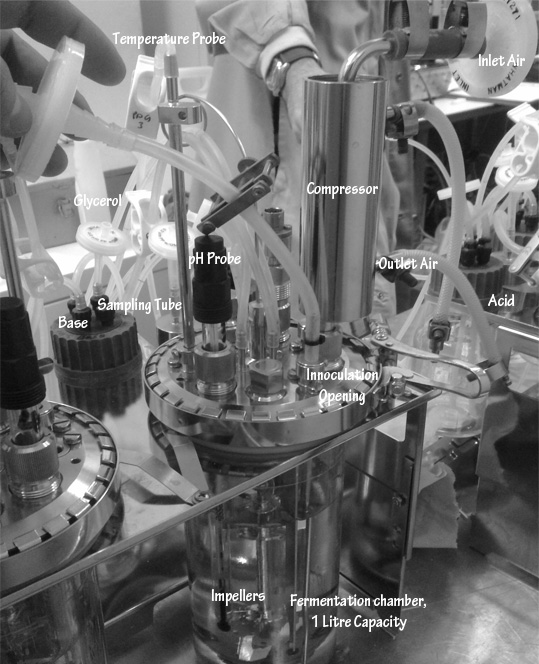Team:UCL London/Approach
From 2010.igem.org
Vision
As a team, we have a vision that our cells can detect external changes in the environment and hence be programmed to response to them, instead of us manually having to detect
One vision for the future is that instead of detecting stressful conditions and subsequently alter or restore the global physical conditions in the bioreactor, the cells would instead be engineered to respond better to small alterations in their own micro environment. To do this the cells first have to be engineered to sense and respond to targeted stresses in a reliable way. Another possible further application for the future is that if these promoters are shown to work reliably they can be used in the same way as other inducible promoters. E.g. during bioprocessing it might be cheaper to spurge a large fermenter with nitrogen instead of enriched air for 10 seconds in order to start an induction, replacing inducing agents such as arabinose or IPTG. Or even better, as we know that the level of e.g. dissolved oxygen will be reduced as the cell concentration is increasing, we can let the cells produce the target protein for the process as soon the cells are concentrated enough to hit a lower oxygen level. Reaching a lower level of dissolved oxygen tension (DOT) means that the cells will not be able to grow so much further or at least not with the same speed as they have been growing until now. That normally means that it is a good time to induce the production of the target protein by adding an induction agent. Some stress responsive promoters could therefore be applied to make the induction step redundant in a particular bioprocess. These could be promoters responsive to e.g. oxygen, growth phase or acetate.
A more direct and probably the most straight forward application could be as an additional induction method. Hopefully it can be applied by synthetic biologists making biological systems that require many different inputs or combinations of inputs to yield a vast amount of responses.
Protein Expression
E.coli is essentially one of the most widely applied in-vivo expression systems. The reason for its wide application is the fact that it is so well developed and the E. coli genome is fully developed and well understood. In biotechnology, as an example, a DNA sequence for a protein of interest could be inserted into a high copy-number plasmid containing the lac promoter, which is then transformed into the bacterium Escherichia coli. Addition of IPTG (a lactose analog) activates the lac promoter and causes the bacteria to express the protein of interest.
One technique of insuring high levels of a protein is to clone the gene downstream of a well-characterized regulated promoter. In our case, we will be using pTAC, the tac promoter, a very widely used expression system. Being the strong hybrid promoter it is, it is repressed by the LacI protein, and on addition of IPTG, the lacI repressser is inactivated. This inactivtation breaks the strong repression of pTAC resulting in expression of pTAC. It has been shown that high expressions of pTAC is directly proportional to the concentration of IPTG added. And so by varying the concentratrion of IPTG added, you can regulate the rate of the expression of the desired protein downstream.
Fermenters
That’s essentially the biology behind protein expression. The engineering side is where our project really gets interesting. In the biopharmaceutical industry, protein expression takes place on a large scale in devices known as fermenters. The recombinant E.coli cells are grown under a controlled environment within the fermenters whose scales can be as large as 10,000 L. A medium is firstly created containing vital chemicals which will ensure that the cells have the vital requirements to maintain growth.


 "
"



 Twitter
Twitter Facebook
Facebook UCL
UCL Flickr
Flickr YouTube
YouTube